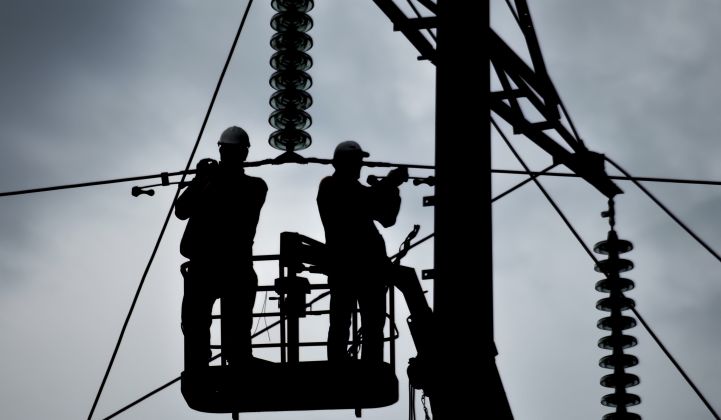Every industry in the world faces dangers and disruptions from the COVID-19 pandemic. Not all of those industries are tasked with keeping the lights on.
U.S. power utilities and generators face an array of risks in the weeks ahead, from energy "demand destruction" as economies slow to tightening debt conditions that could ripple through the commodity markets.
So far, North American utilities have not yet seen the sort of power demand reductions that occurred during China's massive lockdown or those now hitting European countries. But they're likely to start seeing similar impacts soon, according to a Tuesday update from the Wood Mackenzie Power & Renewables and Energy Transition teams.
Italy, as one example, saw an 8.1 percent week-on-week decrease in energy demand after the country ordered its citizens to stay at home and forced the closure of all nonessential businesses, as the chart below illustrates. Power demand fell 7.3 percent year-over-year.

Depressed demand from commercial and industrial consumers is an obvious source of concern for American electricity companies, particularly in power markets such as Texas' ERCOT where falling oil and natural-gas prices could cripple those industries. Texas is by far the largest U.S. wind market and the No. 2 market for solar behind California, fueled in part by the state's voracious C&I power demand.
In contrast to C&I, residential electricity demand is "relatively more stable under economic distress," WoodMac's report said.
“The key question is how long the situation lingers,” said Dan Shreve, WoodMac's head of global wind energy research. “A months-long economic slowdown will likely induce a minor recession and will probably lead to a minor reduction in power demand.”
A growing number of utilities have announced that during the crisis they will stop disconnecting power to customers for lack of payment, including Southern California Edison, Con Edison and Pepco.
Keeping the power lines humming during a pandemic
In contrast to most industries, utilities' ability to stay on their feet during the coronavirus pandemic is a matter of national security.
Utilities are among the 16 industries labeled as “critical infrastructure sectors” by the U.S. Department of Homeland Security, marking them for a heightened level of cooperation with — and scrutiny from — government agencies tasked with public safety.
Like many industries, however, utilities may face workforce disruptions or shortages as COVID-19 bites. The Edison Electric Institute (EEI) utility trade group warned last month that up to 40 percent of utility employees could be out sick, quarantined or at home to care for sick family members as the pandemic spreads.
Southern California Edison has already set up telework for about 8,000 of its 13,000 employees, while the remainder working in the field or in customer-facing jobs are taking steps to keep their distance from the public and disinfect facilities, the utility reported last week.
EEI also warned that during the pandemic, “mutual assistance programs” that bring utility workers from across the country to aid those struggling to restore power after storms and natural disasters “may not be available or may be severely limited.”




